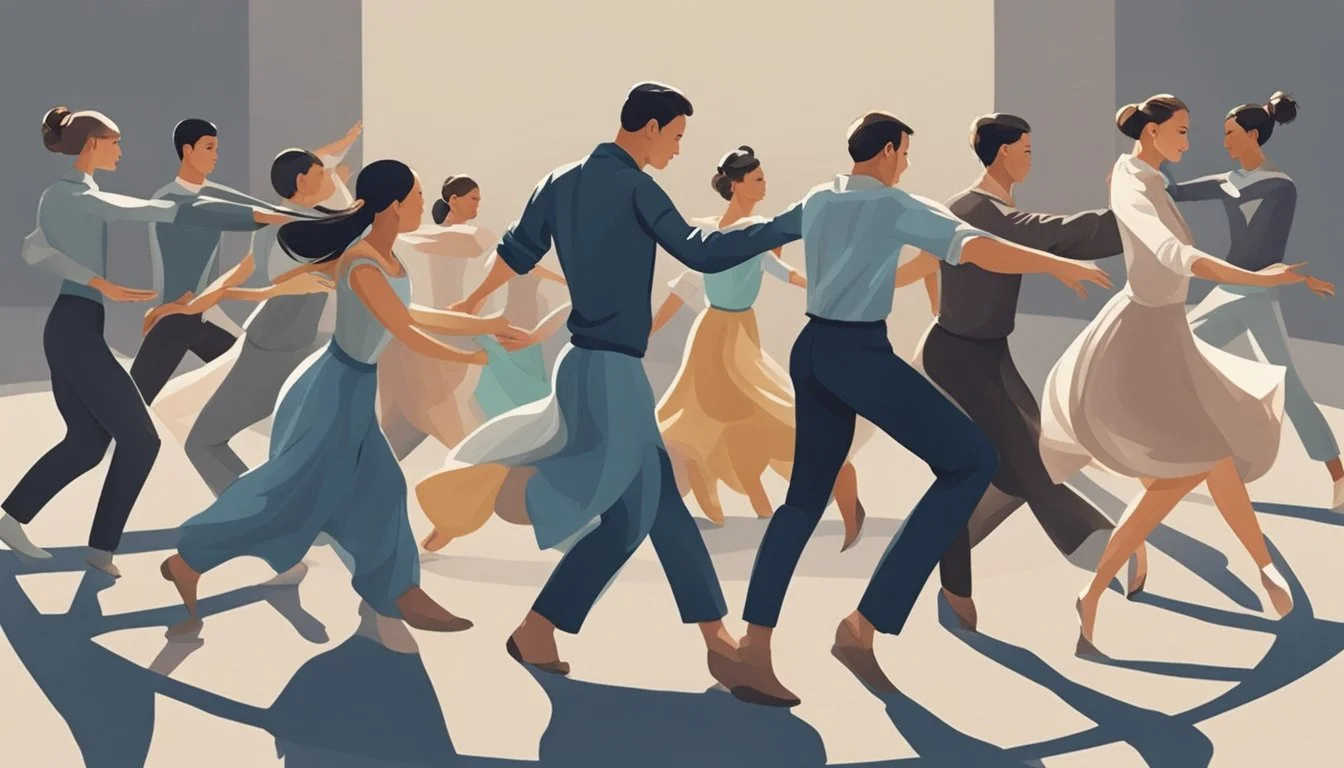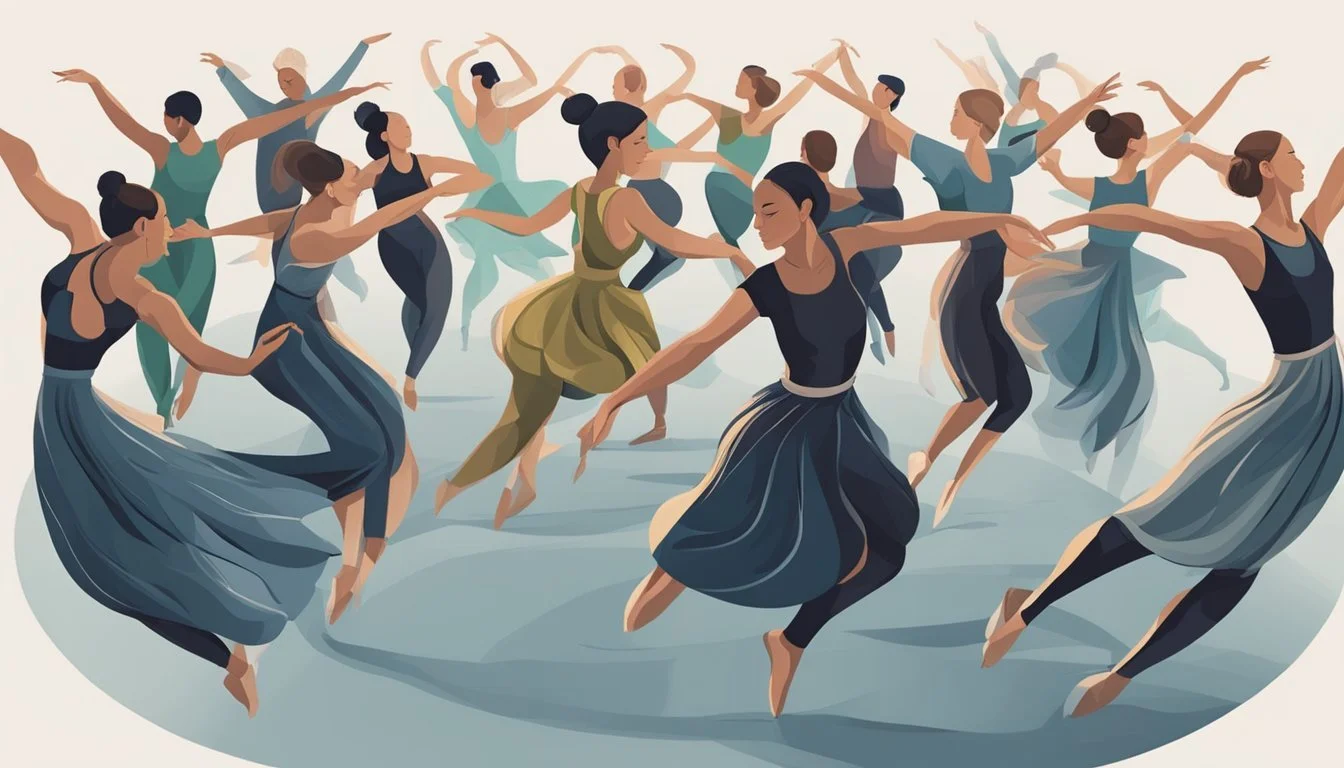7 Ways Trauma Can Impact Your Relationship with Dance
Understanding the Emotional Effects
Trauma can leave deep imprints on both the mind and body, influencing various aspects of an individual's life. The way one engages with dance is no exception, as past traumatic experiences can shape their relationship with movement and expression. Understanding these impacts can be key to fostering recovery and growth through dance.
The intersection of trauma and dance is multifaceted, often affecting how individuals perceive and participate in dance activities. By examining the ways trauma can influence one's connection to dance, individuals and therapists can better navigate the healing process. Exploring these connections highlights the powerful role of dance in trauma recovery and provides insights into effective therapeutic practices.
1) Emotional Detachment
Emotional detachment refers to an individual's disconnection or disengagement from the feelings of others. This can manifest as an inability to get involved in the emotional lives of people around them.
Individuals experiencing trauma may develop emotional detachment as a coping mechanism. This allows them to manage their stress and anxiety by avoiding emotional involvement.
In the context of dance, emotional detachment can hinder a dancer's ability to express feelings through movement. Dance often requires a deep connection between the mind and body, which can be disrupted by detachment.
Dance therapy aims to bridge this gap by using movement to help individuals reconnect with their emotions. Techniques include authentic movement, guided imagery, and somatic awareness to establish a mind-body connection.
This approach leverages the healing power of dance to address both physical and emotional symptoms of trauma, such as tension and muscle pain. By fostering bodily awareness and emotional expression, dance therapy supports trauma recovery and overall mental health.
Emotional detachment not only affects personal relationships but also the quality of performance in dance. Addressing this through therapy can lead to a more integrated, expressive, and fulfilling experience in the practice and performance of dance.
2) Heightened Anxiety
Trauma can often manifest as heightened anxiety when engaging in dance. This anxiety may stem from associating certain movements or environments with past traumatic experiences.
Individuals might find themselves feeling overly self-conscious about their movements. They may fear judgment or ridicule from peers, amplifying their stress levels.
Hypervigilance is also common, where one is constantly on alert for perceived threats. This state of heightened awareness can impede their ability to fully immerse in the dance.
For some, performance anxiety becomes more pronounced. The pressure to perform perfectly can bring about intense anxiety, affecting their confidence and enjoyment.
Understanding these anxiety triggers and working with supportive dance therapists can aid in alleviating these responses. Therapeutic approaches in dance therapy can help individuals feel safer and more grounded in their movements.
Recognizing and addressing these anxious feelings is crucial for allowing a more positive connection between trauma survivors and dance. For instance, finding safe spaces where they feel supported can help them rediscover the joy of movement.
3) Fear of Failure
Fear of failure is a common issue that can emerge from past traumas. Individuals who have experienced trauma may hesitate to try new activities, including dance, due to fear of making mistakes or being judged. This fear can become a barrier to fully engaging in something they might otherwise enjoy.
In dance, fear of failure can manifest as reluctance to participate in classes or performances. This can prevent a person from progressing in their dancing skills and enjoying the benefits dance can offer. The fear may stem from past experiences of criticism or failure in other areas of life.
Overcoming this fear often requires a supportive environment. Participating in dance therapy can be particularly helpful, as it focuses on movement as a form of expression and healing. Dance/movement therapy, for instance, emphasizes using the body to release physical and emotional tension, reducing anxiety related to performance.
In addition, establishing a routine to build confidence slowly, can help mitigate the fear of failure. Small, achievable goals can provide a sense of accomplishment, fostering a positive relationship with dance. Dance as a form of therapy encourages individuals to explore movement without the pressure of perfection, allowing healing through creative and physical expression.
4) Perfectionism
Perfectionism involves setting exceptionally high standards for oneself. Dancers often strive for flawlessness in their routines. This desire for perfection can lead to excessive self-criticism when mistakes inevitably occur.
Competitive dancers are at risk for neurotic perfectionism. They frequently experience anxiety and struggle with self-confidence due to their high concern about making errors.
Perfectionism can also manifest as a constant need for structure and organization. This might be mistaken as a positive motivator but often leads to burnout.
Dancers may prioritize technical accuracy over creative expression. This can limit their growth and enjoyment of the art form. The fear of falling short can overshadow the intrinsic joy of dancing.
Moreover, perfectionism can create a cycle of negative thinking. Dancers may focus on their flaws rather than their strengths, leading to lower self-esteem. This negative mindset can impact their performance and overall well-being.
5) Loss of Joy
Trauma can deeply affect an individual's relationship with dance by stripping away the joy once found in the activity. For some, dance might become associated with painful memories, making it difficult to enjoy.
Emotional and physical injuries can lead to a sense of disconnection. Dance, once a source of pleasure and expression, may feel burdensome or upsetting.
Participants may find it hard to access the sense of freedom and creativity they previously enjoyed in dance. The therapeutic aspects could be overshadowed by lingering trauma, causing the dancer to feel stuck.
For further reading on how trauma affects dance, consider exploring dance/movement therapy's impact as outlined by Dance Magazine.
6) Physical Tension
Trauma can manifest as physical tension in the body, which can significantly impact one's relationship with dance. When individuals experience trauma, their muscles may tense up, creating stiffness and limited range of motion. This physical tension can make movements less fluid and more difficult to execute.
In dance, where fluidity and grace are crucial, physical tension can become a significant barrier. Dancers might find it hard to perform certain techniques or moves due to the tightness in their muscles. This can lead to frustration and a sense of discouragement.
The connection between the mind and body means that unresolved emotional tension often translates into physical tension. This can create a cycle where the physical symptoms of trauma feed back into emotional distress, making it harder to release those physical constraints.
Effective strategies to manage physical tension include techniques such as dance therapy, which uses movement to help release stored physical tension. Stretching and mindful movement practices can also aid in gradually reducing muscle tightness, helping dancers regain their full range of motion.
Understanding the impact of trauma on the body is essential for dancers looking to reconnect with their passion for dance. Addressing physical tension is a critical step toward healing and rediscovering joy in movement. By incorporating therapeutic and mindful techniques, dancers can begin to alleviate the physical symptoms of trauma.
7) Avoidance Behavior
Trauma can lead to avoidance behavior, particularly in the context of dance. Individuals may avoid dance activities because they associate them with past traumatic experiences.
Avoidance can manifest as a reluctance to participate in dance classes or social dance events. This can stem from a fear of vulnerability in a social or physical setting.
The physical closeness and touch involved in many dance forms can trigger memories of trauma. This can lead someone to consciously or unconsciously avoid dance altogether.
Dance therapy can help address avoidance behavior by creating a safe environment. An experienced therapist can guide individuals to explore movement in a way that feels secure.
By slowly reintroducing the body to dance through controlled, therapeutic movements, individuals can begin to break the cycle of avoidance. This process can foster a sense of safety and confidence, enabling them to participate more fully in dance activities.
Some might find it helpful to start with solo dance movements before progressing to partner dances. This gradual approach can help reduce anxiety and build trust in the process.
Understanding Trauma's Influence on Dance
Trauma can profoundly affect an individual's relationship with dance. This influence can manifest both mentally and physically.
Psychological Impact
Trauma often leaves deep psychological scars. These scars can affect how someone perceives and engages with dance. For many, dance may evoke emotional memories tied to traumatic experiences. This connection might cause anxiety or fear, making it difficult to enjoy or feel comfortable while dancing.
Emotionally, trauma might impair one's confidence or self-esteem. Dance requires vulnerability and self-expression, which can be daunting for those with unhealed emotional wounds. In dance/movement therapy, individuals might find it challenging to access and express these emotions safely.
Physical Manifestations
Trauma can result in physical symptoms, including chronic pain or tension. These symptoms often manifest in specific areas like the neck, shoulders, or back. For instance, tension in the muscles may make fluid movement difficult, which is crucial in dance. By addressing these physical symptoms, dance therapy can promote healing and flexibility.
Moreover, trauma can disturb motor coordination. Some individuals might struggle with balance or coordinated movements due to disrupted connections between mind and body. Engaging in dance therapy can help in gradually restoring these physical capabilities by fostering bodily awareness and encouraging relaxed, harmonious motion.
Healing Through Dance
Healing through dance can be an effective way to process trauma. By engaging in therapeutic approaches and creating safe environments, individuals can use movement to address both physical and emotional challenges.
Therapeutic Approaches
Dance therapy can help individuals reconnect with their bodies. Techniques such as guided movement and improvisation foster self-expression and emotional release. For instance, patients might begin with simple, intuitive motions, helping them to connect with their breath and bodily sensations.
In dance/movement therapy, sessions are often tailored to the individual's needs. This might involve structured dance routines or freer forms of movement to help release tension and unveil suppressed emotions. This approach underscores the importance of the mind-body connection, enabling a holistic healing process.
Safe Environments
Creating a supportive space is crucial for effective dance therapy. A secure and encouraging environment allows individuals to feel comfortable exploring movement without fear of judgment. Therapy sessions often take place in studios or private areas where participants can fully express themselves.
Moreover, these environments are designed to be trauma-informed. Therapists ensure that the space respects participants' boundaries. For instance, they might offer options for participation to meet different comfort levels, making sure each individual feels safe and validated throughout the process. This focus on safety helps build trust and facilitates deeper emotional healing.
Dance therapy sessions might also occur online, offering flexibility and accessibility for those who cannot attend in person. The key is fostering an inclusive environment where healing can occur, whether physically together or virtually connected.










